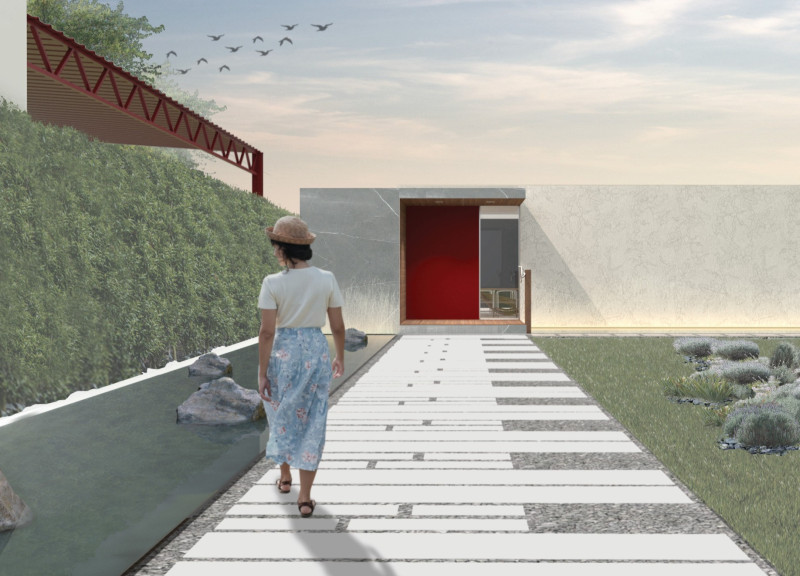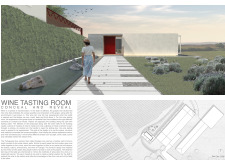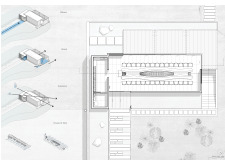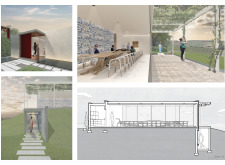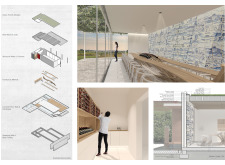5 key facts about this project
The Wine Tasting Room is set within a landscape that highlights the natural beauty and cultural significance of wine production. It is designed to provide an immersive experience for visitors, reflecting the concept of "Conceal and Reveal." This design approach engages visitors by creating moments of anticipation and discovery. The building features solid walls with carefully placed windows that allow for glimpses into the interior, fostering a sense of mystery.
Interior Design and Materials
Inside, the space is adorned with Portuguese blue ceramic tiles known as Azulejos. These tiles form a prominent feature wall, adding a colorful contrast to the predominantly white interior. Each tile tells a part of the story, linking the tasting experience to Portugal's rich history and culture of winemaking. The wall serves not only as decoration but as a narrative element that connects visitors to the essence of the vineyard.
Spatial Configuration
The layout of the Wine Tasting Room is structured to promote a sensory experience that engages sight, smell, taste, and sound. Visitors approach the building along a path with flowing water, which creates a sense of calm and connection to nature. The robust walls of the structure define the space, shaping the atmosphere inside and encouraging deeper exploration of both the wine and its context within the landscape.
Furniture Design and Functionality
Furniture design is essential to the overall experience, drawing inspiration from vineyards and the routes used by those who harvest grapes. The table features steamed, bent legs that intertwine, representing the methods employed in managing vines. One leg is elevated, allowing staff to present wine at a comfortable height. This design detail facilitates interaction, ensuring that knowledge about the wine is effectively passed from the server to the guests, fostering a welcoming environment.
A noteworthy detail is the elevated leg of the table, which not only serves a practical purpose but also enhances the connection between the staff and visitors, creating a meaningful interaction during the tasting process.


